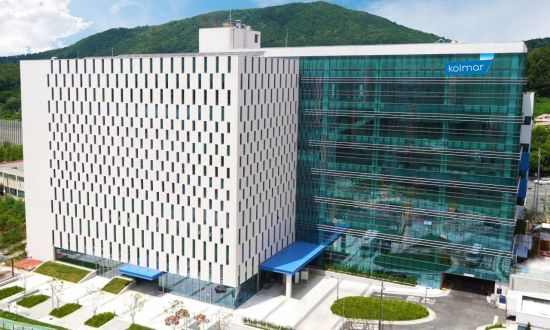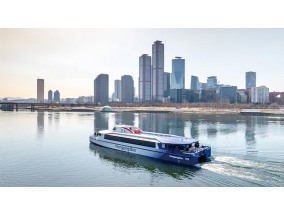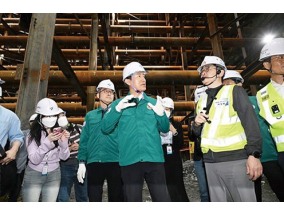 이미지 확대보기
이미지 확대보기According to a disclosure by the Financial Supervisory Service on the 13th, Kolmar Korea's factory utilization rate was 120.3% as of the third quarter of last year, exceeding its capacity. This was due to a rush of orders as the company exported more K-beauty products.
As additional orders are hard to come by, Kolmar Korea is tightening the reins on expanding its capacity (CAPA). The company plans to put the newly expanded Sejong 1 plant into full operation in the first half of this year. The expansion is expected to increase the company's cosmetics production capacity by more than 20 percent.
Securities analysts expect the company's increased production capacity to drive sales this year. “The domestic CAPA will increase by more than 20 percent this year, adding to the effect of the expansion,” said Park Eun-jung, a researcher at Hana Securities. ”The company is expected to respond smoothly to the increase in orders this year as its production capacity is steadily expanding.”
“With the completion of the line expansion at the Sejong plant, the company has secured an annual CAPA of 5.3 billion units,” said Jeong Jeong-sol, a researcher at Daeshin Securities, adding, ”Growth is expected to continue this year.”
Overseas production facilities will also see significant improvements this year. Kolmar Korea plans to complete its second U.S. plant in the first half of this year, raising the capacity utilization rate of its North American production facilities from 180 million to 300 million. The recent influx of new customers in the North American market has spurred the company to expand its local production capacity.
The expansion of domestic and international CAPA is raising expectations for Korea Kolmar's performance even as distribution costs have increased this year due to Trump's second term tariff policy and high exchange rates.
However, this year's increase in orders and production from overseas customers is expected to offset the exchange rate burden to some extent. “Hankook Kolmar's U.S. subsidiary is expected to post high sales growth (55% year-on-year) due to the influx of new local customers, and its U.S. Plant 1 is expected to turn profitable,” said Jeong Jeong-sol. He also forecasts that the company's consolidated sales will reach KRW 2.7 trillion this year, up 11% from last year, and operating profit will increase 30% to KRW 270 billion (10% operating margin).
An industry insider said, “The recent increase in the exchange rate has increased the burden on companies that are highly dependent on importing raw materials,” adding, “Overseas subsidiaries are strengthening their global market operations as they trade in dollars.”
Kim Nayoung, Korea Finacial Times (steaming@fntimes.com)
[관련기사]
가장 핫한 경제 소식! 한국금융신문의 ‘추천뉴스’를 받아보세요~
데일리 금융경제뉴스 Copyright ⓒ 한국금융신문 & FNTIMES.com
저작권법에 의거 상업적 목적의 무단 전재, 복사, 배포 금지








![용산구 ‘나인원한남’ 88평, 9억 상승한 167억원에 거래 [일일 아파트 신고가]](https://cfnimage.commutil.kr/phpwas/restmb_setimgmake.php?pp=006&w=284&h=214&m=5&simg=2025071010042800278b372994c952115218260.jpg&nmt=18)










